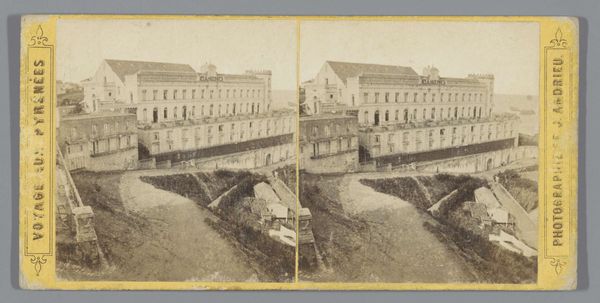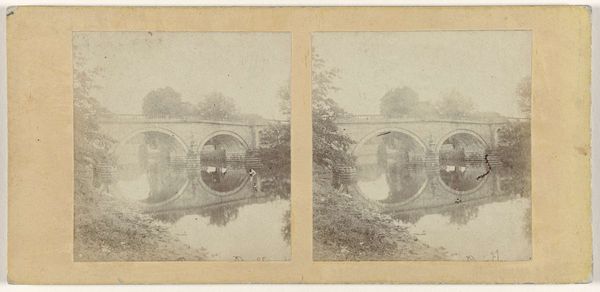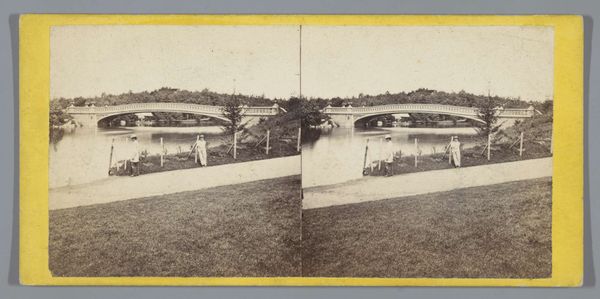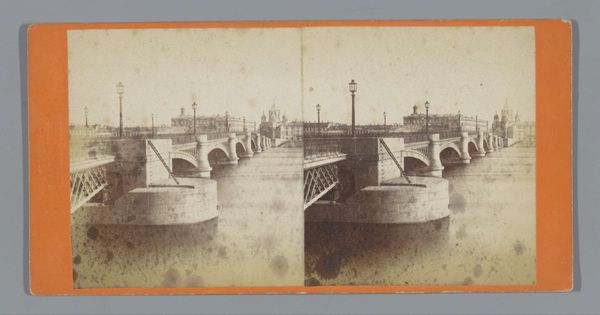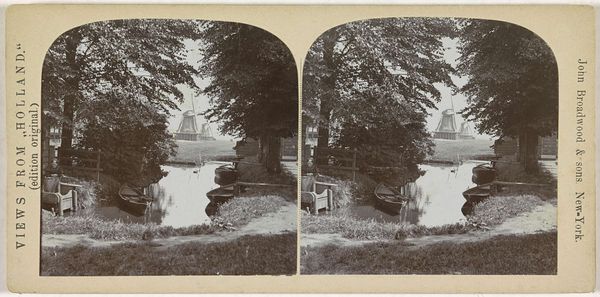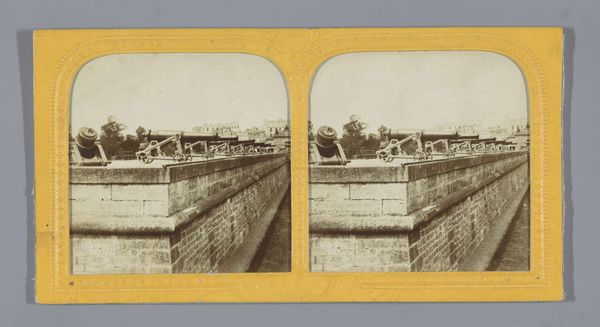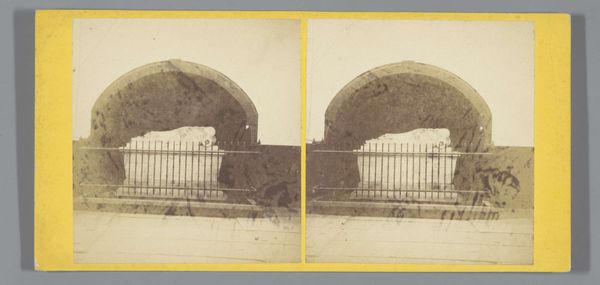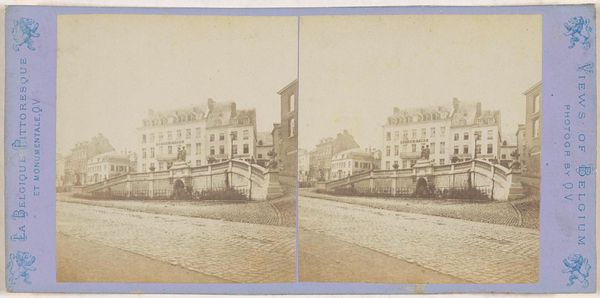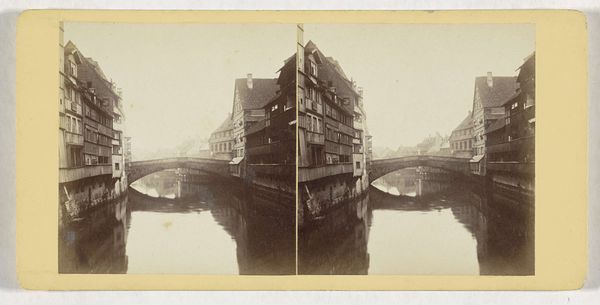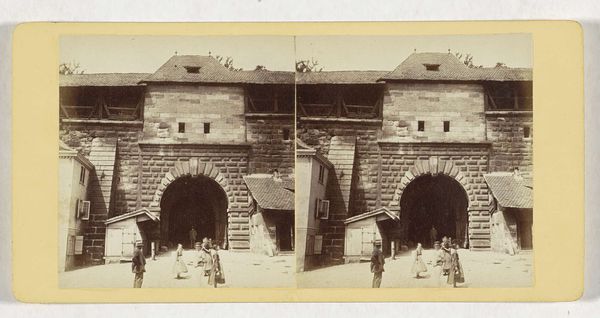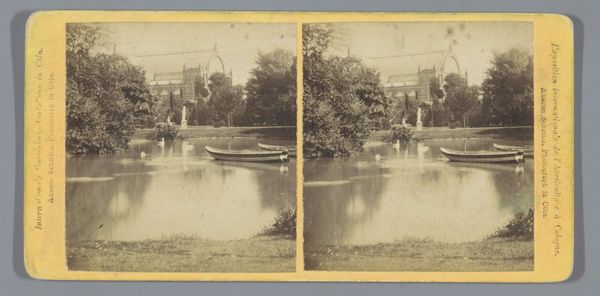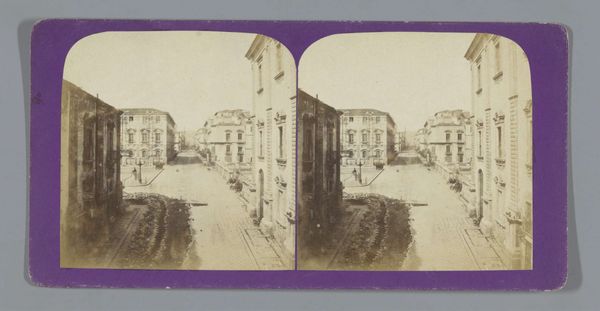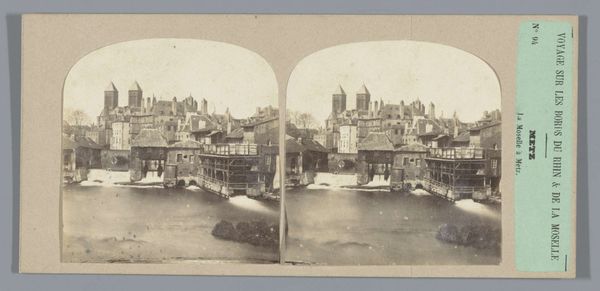
Dimensions: height 87 mm, width 177 mm
Copyright: Rijks Museum: Open Domain
Curator: This gelatin silver print, “Fronveste en Kettensteg in Neurenberg,” by Johann Friedrich Stiehm, transports us to late 19th-century Germany. Editor: It certainly does. My first impression is of a quiet melancholy, perhaps owing to the monochromatic tones and the somewhat obscured view. There’s a real sense of history layered within those heavy stones. Curator: Precisely. Note the symmetry and the careful balance between the architecture and the natural surroundings. Stiehm employs the bridge as a focal point, its arched form mirrored in the water below, creating a pleasing, almost classical harmony. The building behind, what we might call the Fronveste, looms as a perfect rectangular backdrop that anchors the composition. Editor: But it's also worth thinking about who this ‘harmony’ serves. Who built the fortifications? Who crossed this bridge and what socio-economic strata did they represent? The image becomes less about pleasing aesthetics and more about systems of power. Curator: An astute observation. While the visual arrangement pleases, let's consider the medium itself. Stiehm’s choice of gelatin silver print provides crisp details and tonal range, enhancing the textural qualities of the stone and water. These early photographs democratized the dissemination of such images in an unprecedented manner, while still upholding conventional techniques. Editor: Agreed, the printing process contributes to a sense of permanence. Thinking intersectionally, photographs such as this not only document place, but they were also instrumental in shaping perceptions and colonial narratives of the German landscape and its cultural identity. Consider how these idealized vistas became instrumental in national propaganda during periods of political unrest. Curator: It speaks to how artistic interpretation is received across historical shifts and varying socio-political vantage points. This initially uncomplicated visual, when carefully inspected and historically decoded, unearths the embedded complexities that transcend superficial representation. Editor: Absolutely, an aesthetically beautiful work can also function as an active agent. Paying close attention reveals hidden structures, and, to ask questions, that, I think, is the vital thing.
Comments
No comments
Be the first to comment and join the conversation on the ultimate creative platform.

